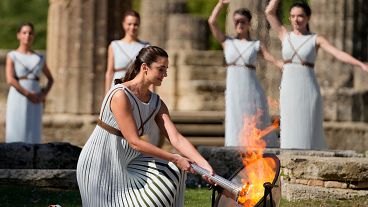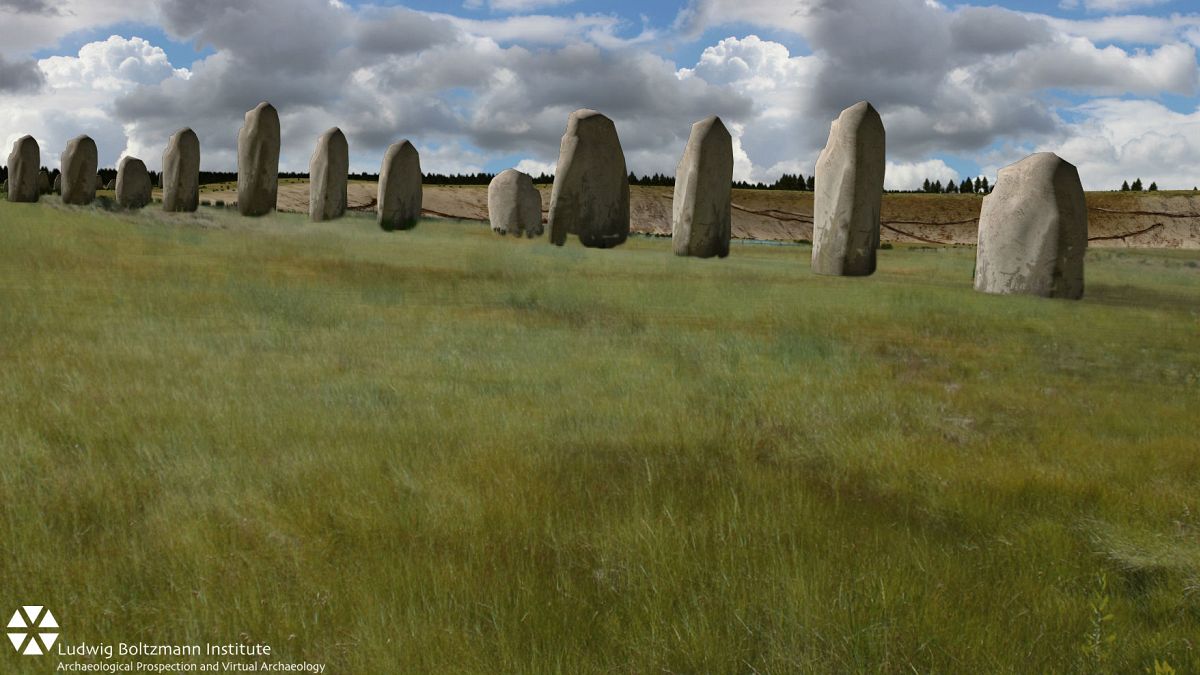Stonehenge history is being re-written with the remains of new prehistoric stone monuments discovered beneath Durrington Walls, less than 3km from the historic archaeological site.
Measuring 500m in diameter and thought to have been built around 4,500 years ago, Durrington Walls is one of the largest-known henge monuments. Neolithic in period and pertaining to the British Isles, henges and their stones were likely used for ritual purposes or for marking astronomical events, such as equinoxes and solstices. Considered one of the wonders of the world and the best-known prehistoric monument in Europe, Stonehenge is the remains of a ring of standing stones. Archaeologists believe it was built anywhere from 3000 BC to 2000 BC.
Without excavation, using non-invasive geophysical and remote sensing technologies, The Stonehenge Hidden Landscapes Project team has discovered evidence for a row of up to 90 standing stones under the Durrington Walls ‘super-henge’. Some of the erections may have originally measured up to 4.5m in height.
Over a five-year period the team created an underground map of the area. The project aims to address gaps in the knowledge and understanding of Stonehenge by “conducting a cutting-edge geophysical and remote sensing survey at unprecedented scale”. Its findings will have significant implications for our understanding of Stonehenge.
Says Paul Garwood, Senior Lecturer in Archaeology at the University of Birmingham, “The extraordinary scale, detail and novelty of the evidence produced by the Stonehenge Hidden Landscapes Project, which the new discoveries at Durrington Walls exemplify, is changing fundamentally our understanding of Stonehenge and the world around it. Everything written previously about the Stonehenge landscape and the ancient monuments within it will need to be re-written.” Garwood is the principal prehistorian on the project.
Previously, archaeologists believed that only Stonehenge and a smaller henge at the end of the Stonehenge Avenue possessed significant stone structures. The latest surveys provide evidence that Durrington Walls had an earlier phase which included a large row of standing stones probably of local origin. The context of the preservation of these stones is exceptional, and the configuration unique to British archaeology. Many of the stones survived because they were pushed over and the massive bank of the later henge raised over the recumbent stones or the pits in which they stood.
The Stonehenge Hidden Landscapes Project is an international collaboration between the universities of Birmingham and Bradford and the Ludwig Boltzmann Institute for Archaeological Prospection and Virtual Archaeology.
Stonehenge II – exciting stuff involving
unibirmingham</a> academic. <a href="http://t.co/FPWYZKVSyA">http://t.co/FPWYZKVSyA</a> <a href="http://t.co/zQZVUPpNFF">pic.twitter.com/zQZVUPpNFF</a></p>— Birmingham Mail (birminghammail) September 7, 2015
Watch VIDEO of the Durrington Walls.
Public opinion:
So exciting that Durrington Walls has been found underground near #stonehenge & even bigger! http://t.co/FpusqHmLm4
VisitBritain</a></p>— Jane Dismore (JaneDismore) September 7, 2015
Stonehenge discovery 'immense' says lead archeologist – video http://t.co/5VMAhPLsEK Great work by Prof Vincent Gaffney & Uni of Bradford!
— Juliet E McKenna (@JulietEMcKenna) September 7, 2015


